If you make original softies and you want to turn your toys into a business, selling your patterns is probably a good use of your time and effort. Creating a good pattern and getting it ready for sale is a significant investment up front, but once it is made you can sell the pattern in your online shop indefinitely and hopefully make a profit.
Well-written step-by-step instructions with illustrations showing how to make a beautifully constructed toy that can be instantly downloaded as a pdf? Certainly this is going to be an attractive product in your online shop. Allowing buyers to sell the toys they make from the pattern? That’s got to be a value-added feature and it very well may bring you more business!
Softie pattern designers tend to add this feature, known as a cottage industry license, by indicating in the product listing that buyers have the right to sell toys made from the pattern. Usually designers limit those rights so that the toys cannot be mass produced. And some place additional limits on the total number of handcrafted toys that can be sold.
Designers tend to charge for the license either buy raising the cost of each pattern or by selling licenses for a yearly fee. In either case, designers usually require that the seller attribute the pattern to them, some specifying exactly how exactly the designer is to be credited by affixing special hang tags to the toys or at least including a link back to the desingers site if the toys are to be sold online. Some designers require licensees to sign a contract, other use more of an honor code.
For this post I did quite a bit of searching for softie designers that have made the decision to add this allowance. I wanted to ask them how its gone. I wondered what led up to the decision to offer a cottage industry license on their patterns and if they have indeed seen increased sales. Have buyers generally been respectful of the license and the limitations? I wondered if they are happy with the decision.
The first designer that came to my mind when I began thinking about this post was Hillary Lang. In June of 2011 Hillary began offering a cottage industry license for sale on her site for $125. The license allows makers to sew and sell nearly all of her toys. I asked Hillary if she would share how the experience has gone for her thus far. Hillary said she didn’t think she could be of much help, that the licenses were everywhere and people were asking about them so she decided to offer them. She referred me to a few other designers she knew of that also offered licenses.
Another toy maker that came to mind was Pauline from FunkyFriendsFactory. Pauline and I have been chatting and I think I will do a separate post in the coming weeks about our converstaion. We will discuss this topic among others.
I kept searching for a softie designer that was willing to speak freely and share their experiences, for better and worse, with the wider craft community. At Hillary’s recommendation I reached out to Larissa from mmmcrafts and was really excited that she was willing to share with us how offering cottage industry licenses has gone for her. You can visit Larissa’s shop on Etsy here and her pattern shop on Craftsy here.
There are several Etsy sellers who have bought Larissa’s patterns, sewn the toys, and are selling them right now including Ragamuffin Baby (who also is a weewonderfuls licensee) and Whimsy Vintage.
All images below are of Larissa’s toys and are posted with her permission. Thank you, Larissa!
—————–
Here is what Larissa told me in her own words:
“I struggled mightily with this, believe me. I had so many sweet requests from readers to sew and sell my designs and I felt like if they were honest enough to ask then maybe I should make that an option somehow, especially when I am unable to devote the time to make a lot of items and sell them myself these days.
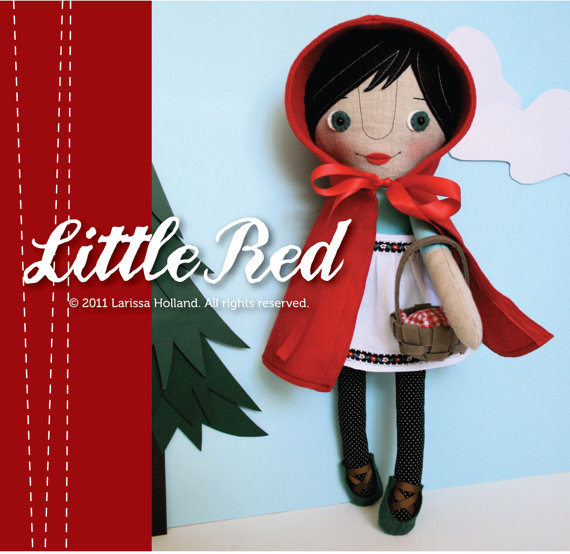
The No Commercial Selling policy just seemed a little too restrictive when some of my customers only wanted to make and sell the items to their friends who didn’t sew. I find that being the Pattern Police is no fun at all. I’d much rather design patterns than spend my time worrying about how home sewers use them.
I did make a very brief foray into selling limited licenses for my sewing patterns. I think it lasted a couple of days. LOL. I had done extensive research around the web on various cottage industry pattern designers to get a feel for what the standard was and then I launched my own version of the limited licenses on my blog. Then maybe two days after that I took the page down and put the whole thing on hold to do more research.
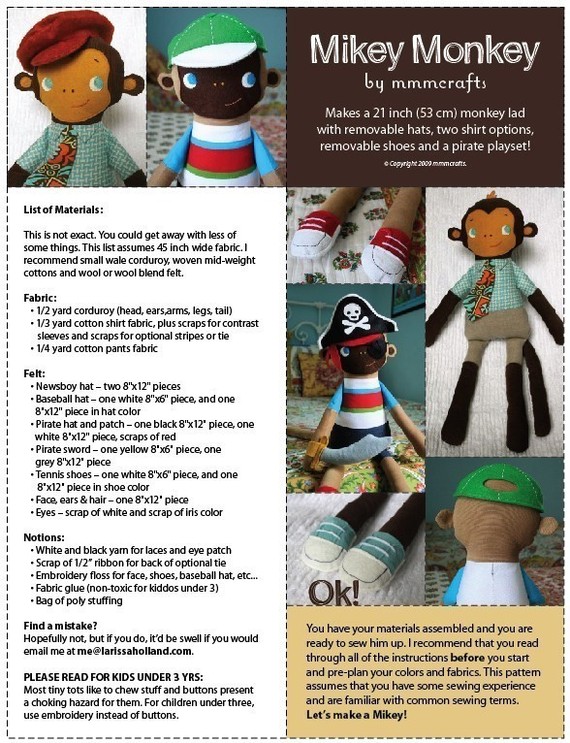
It had come to my attention during that time that there is a lot of conflicting information out there about
1) exactly what copyright is
2) what it applies to and
3) what it does and does not cover in the case of pattern design
I spoke with a lawyer I know and did some extensive reading of US Government copyright law handbooks. I highly recommend those government handbooks if you are having trouble sleeping! I did end up with a much better picture of what copyright law in the US is, and I can be confident that my images, designs, written patterns and illustrations are definitely protected under those laws.
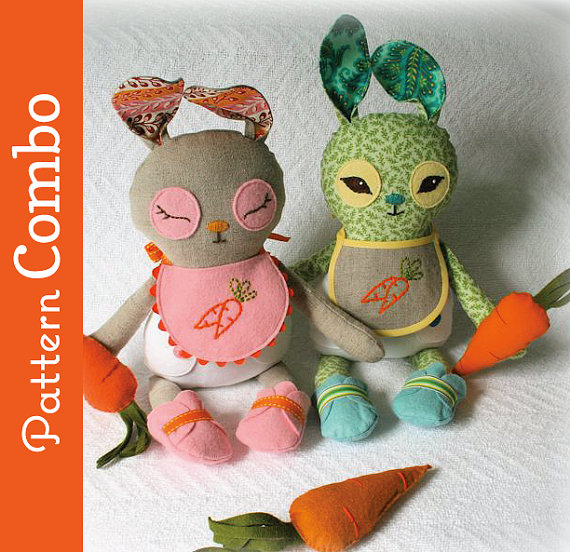
What was not clear was how copyright extends to how a person uses a pattern. I wrote to the US copyright office to ask some specific questions about how copyright applies to patterns and commercial selling. I’m still waiting for an answer. Perhaps I will receive an answer some day as I’m rocking on the porch of my nursing home.
I also contacted the big pattern makers like Simplicity, McCalls and Vogue to ask them about their copyright and how it applies to selling items made from their patterns. Even among those three I received conflicting answers along with suggestions that I contact their legal team with my name and address if I wanted to pursue it.
I concluded that
1) I did not have a clear enough understanding of copyright law as it applies to cottage industry licenses.
2) I cannot afford to retain a bevy of corporate lawyers.
3) Even if I did have enough money to retain the lawyers that I’d much rather spend it on fabric and paper. And frothy coffee.
4) I needed to find a solution that I could feel confident about.
So I started looking for examples of successful pattern designers who have an open policy about cottage industry. There are many, but one in particular that was encouraging to me at the time was Bit Of Whimsy Dolls (http://www.bitofwhimsydolls.com/). I had purchased some patterns from her etsy shop in the past and had noted her open policy about toy selling. She seemed to be enjoying great success not only from her pattern sales but also her own handmade doll sales. It helped to confirm that an open policy was worth a try.
And that is how I arrived at my current cottage industry policy. I don’t want to come off as preachy — There are many designers who have made a great success of both Non Commercial policies and the selling of limited licenses. It’s just not a great fit for me!
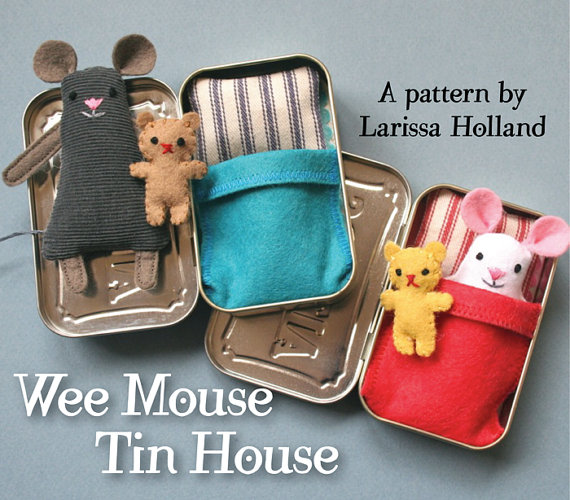
Do you think it is was the right decision for you?
A resounding yes! In the end, opening up my policy to welcome cottage industry from my sewing patterns just felt right to me. It was like a huge weight off. It’s just more my style. I know as an enthusiastic indie pattern purchaser myself that I love having that option included by the designer. As a business owner, it also lifts away paperwork and clerical record keeping and I’m able to focus on what I love to do. Create.
Would you recommend it to other toy designers? Any reservations?
I’m not sure I can tell other toy designers what’s right for them. All I know is that it is the best option right now for me personally. My reservations would only be that if you do allow commercial sales that you find some way to be compensated/credited properly for your designs so that your open policy could in turn benefit future business, and that you also make it clear how your copyright protects your brand. Just because folks can sell items made from your patterns does not transfer them the copyright for your designs. It’s two different things.
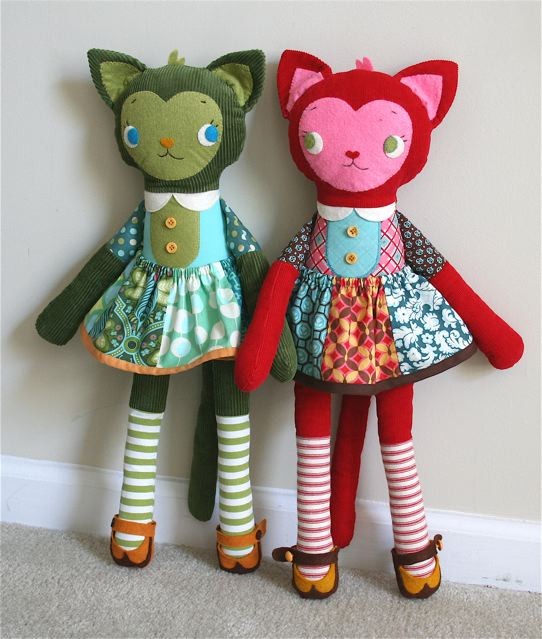
Have you experienced any abuse of the privilege?
Not so far! I really believe that the majority of the cottage industry sellers out there have kind intentions and conduct themselves with honesty. Most people who love to sew can understand what goes into a pattern design and so they have an insight to the hard work involved. Every day I receive emails from sweet readers who just want to share their thanks and tell me about their success. It really makes my day.
I don’t actively police the web looking for violations but one thing I did run into randomly was an Etsy seller who was using my pattern to make and sell items without listing a credit for the pattern design. When I contacted her (very nicely) to ask that she include a credit in the listing I found that she was completely unwilling to admit that she was even using my design. I always find that kind of thing very discouraging and completely mystifying. It’s not a lot to ask. Especially since that particular pattern is free.
I read the rules and limitations your set out and wondered if those have worked for you.
They seem to have worked fine so far. I have gotten nothing but encouraging emails about the new policy and my pattern sales are trending up.”
Larissa, thank you! You have to be brave to be willing to share your real experiences with people and I give you so much credit both for offering these licenses and for your willingness to take part in this post.
—————-
So what do you think?
If you don’t already offer a cottage industry license, would you consider it? Which model appeals to you – charging up front for a year’s priviledge (and how much do you think that should be worth? Gail Wilson charges just $35 a year) or adding a few dollars to the cost of each pattern?
If you do offer a license already, we would love to hear about your experiences.
And if you’ve bought a license, or a pattern that includes one, was it an attractive feature to you?
Let’s learn from one another and hopefully each of us will be better able to evaluate whether this might the right move for us in our own softie businesses!
*****
If you find this series helpful to you, I hope you’ll consider making a donation to help support it. Each post in this series takes several hours to research and write, and I love doing it! Knowing that you are willing to support it helps me to continue to write in-depth about each of these topics. Thank you!
Thank you so much for this article, it soo interesting!
For my part, I decided 1 year ago, to offer a licence on each of my products and its work pretty well!
I saw so many times some abuse on my models, that I decided to regule this… and it works pretty well 🙂 Especially on my kallounette (baby blancket) and japanese sleep sack who were a lot copied, without mention of my name or anything … Now, it is a lot better!
For my softies, I never see copies of them, I think , it is mostly because it is absolutly not rentable : to much time to make one, it would be to costly to sell… and maybe also, because of their design : you can recognize them too easily?
(sorry for my creative english, I’m french! 😉 )
Kallou
http://www.kallou.fr
I do like the idea of a few dollars added on to give you the right to sell. If I were going to sell any it would just be because I wanted to make a few of them for fun but didn’t need to keep 5, so I could give away or sell the extras. It would not be worth a large fee ($35 is not too bad) unless I planned on making a bunch.
wow, what a post! so much information to take in there. i’ve often thought about how to tackle the cottage license issue and am pretty certain that i’d go about it by adding a bit extra to the cost of the pattern to cover it. my problem is i’m in the uk, and the majority of my sales are in the usa, both of which are governed by differing copyright laws. answer for me i guess is to take this simpler route. i feel doing it based on a separate license fee would just take up too much time to police.
Thank you for this article – certainly a lot of food for thought and useful information. I get quite a lot of enquiries for patterns and hold back from selling them – I’m also in the UK and find the whole copyright issue baffling. To add a bit to the cost of the pattern sounds like a sensible option.
What are your own policies on people making and selling items from patterns in your book? The one time I wanted to make and sell one-off knitted softies from book patterns, I contacted the designer to ask permission for a limited number and never got a reply. So for fear of breaching copyright, I never did it but I know it can be an issue. I even know of a British knitting designer who had one of her free patterns ripped off by a national supermarket!
I’ve been selling patterns for my knitted toys for several years now, and almost from the start customers were asking if they could sell the toys they make. We decided to have a very open policy, with just a few rules set out on my website. I don’t charge any license fee, and there’s no contract, I just ask that people mention me as the designer of the toy. From the sellers I see on Etsy, most people are quite happy to do this, although I’ve had the same exception with someone using one of my free patterns. However, I think most people selling the toys do so at craft sales – I wouldn’t have any way to check on those sales, so I’m glad I wasn’t worried about it anyway.
Overall, I’d say allowing sales of toys made from my patterns has brought me more customers and interest in my designs, but perhaps not so much to make it worthwhile for someone who feels uncomfortable with the idea.
Hi Barbara,
It sounds like this decision has brought you some piece of mind knowing that you do allow people to sell items made from your patterns so you don’t have to worry about policing. It is interesting that free patterns seem to be the ones sold without accrediting the designer. The act of paying for a pattern helps makers acknowledge that someone else put work into designing it.
In general the patterns from books cannot be made for sale so you were right to not sell knitted softies from a book pattern.
Adding a cottage industry license without headache and policing is certainly a challenge I think. I would agree that tacking a fee onto each pattern would be the easiest way, but I wonder whether an added few dollars is enough to compensate a designer for allowing another person to profit from the pattern forever. Just a question.
Thank you for your perspective as a potential customer of a pattern affiliated a cottage industry license, Tiffany. I would agree that the possibility of selling the toys makes the pattern more attractive to buyers.
Thank you for your comment, Kallou. I hadn’t visited your blog before and your toys are wonderful!
It sounds like allowing others to make your work and sell it has given you some freedom to let go. I think that feeling that you don’t have to continually police the internet and go after people is worth a lot!
I’ve just recently started an “open” type policy on my Paid-For patterns. I really have no desire to make and sell items, so this lets me do the fun parts that I love to do (design) while letting other’s benefit from the design.
I really like Larissa’s policy page! I wish I could copy it word for word! 🙂 I won’t though, but I think I”ll be putting something very similar up soon.
Larissa’s policy page is very similar to Bit of Whimsy Dolls’ page (http://www.bitofwhimsydolls.com/content/Terms_of_Use/1002_) so check that one out, too. I think it is worthwhile to read Hillary’s contract (http://www.weewonderfuls.com/licensing.html) because it was clearly written by a lawyer and has some good protections built in.
I’m not sure I would limit the number of total items I allow buyers to produce and sell. It seems difficult to regulate to me.
When I buy a pattern I always look to see what the restrictions are regarding selling what I make from it. I will not buy a pattern where there is the restriction “for personal use only”. Home sewers want to make more than one if it’s something they have enjoyed making and in these economic times there are lots of them who want or need to suppliment their incomes. Pattern designers who understand this will definetly have better sales…from me for sure:)
Thank you, Mary Ann. This is really a valuable perspective from a buyer. Now that I have become more aware of cottage industry licenses I can see that it is a valuable aspect of any pattern available for purchase.
those are helpful. THanks!
When I buy a pattern I always look to see what restrictions have been put in place. I do like the option of being able to make some to sell, but in saying that I usually only make 1 or 2 from the same pattern & usually end up just selling 1. I certainly wouldn’t be able to go into ‘mass’ production, there just isn’t the time. There are always too many new patterns to make without making a lot of the same.
If I do sell anything I always give credit to the designer. I wouldn’t even think of not giving them credit.
lyn.robyn.smith@gmail.com
Thank you so much for this! I’ve been wondering about all of this and answers did not come easily.
I do not have a shop but I have contacted Melly & Me about this very thing – they emailed back that its ok to sell stuff made from their patterns (I was asking specifically about patterns from the book Sewn Toy Tales) if I added a tag line to the finished product letting the buyers know who wrote the pattern.
I agree. As a buyer, I, often sadly, avoid buying patterns that don’t allow me to sell the items i make. I appreciate the intent of the cottage industry wording and am more than happy to give the designer credit (and I love the Wee Wnderfuls patterns and have bought them because of the option.) I have a tote bag pattern and plan to put a similar option out there.
Very interesting. I didn’t realize this was such a debate in the industry. I’ve seen the non-commercial licenses on a lot of the patterns listed on Etsy, but since I don’t sell finished toys I never thought much of it.
I starting this February I sell stuffed pony patterns on Etsy and I chose to give people the right to do whatever they want with the toys they make from the patterns (including selling them). It’s the way I’d rather have patterns I buy work, so it seemed like the right thing for me to do.
I can’t say if it’s hurt or helped my business, since I’ve never had a more restrictive policy, but it does generate a lot of good will from my customers. Instead of being angry and tempted to break the license they agreed to I’d rather they were happy and feel the pattern gives them the rights they want. 🙂
Thank you, Eva, for sharing your perspective. I think allowing people to sell what they make is really a good way to go. I can tell you from experience that seeing people build their businesses based on your patterns is tremendously satisfying.
This is the best resource I’ve found regarding United States copyright law and sewing patterns: http://www.tabberone.com/Trademarks/CopyrightLaw/Patterns.shtml
Technically once the toy has been made from your pattern you have no control of where it goes after that or of how many are made. Offering cottage licenses provides a way for users of your patterns to compensate you for your role in their business. But I would be wary of allowing my name to be placed on products that I have no way to check the quality of.
I think you raise a good point here, Cat. If your name is on the product crediting you as the designer of the pattern from which it was made, how culpable are you if something goes wrong? For that I would need to consult a lawyer, but you’ve given me quite a bit to think about here. Thank you.
I know this article was written while back so I don’t know if anyone will read this and respond but I would really like some help with this issue. I’ve never sold anything before but I signed up for a small local craft fair and wanted to sell handmade toys using patterns from a book I bought. No where in this book did it say I couldn’t sell my items. I have made a stock pile and the fair is soon. I recently found the authour’s website and she sells the individual pdf patterns and on those it says not to sell items made from her patterns. What the heck? I started reading articles on-line (including this one) trying to find out the deal. Most articles say I can do what I want with items I make….but here there is mention of Cottage Industry Lincense. The author doesn’t seem to offer this. I paid a lot of money for this book of patterns and I would not have bought it if I knew I couldn’t sell anything. Any thought?
Hi Penelope,
It’s a tricky issue. Most publishing houses make it illegal for people to sell items they’ve made from patterns in books. Designers are not permitted to sell the patterns from their books individually so I would be surprised if this designer is doing so. But perhaps her book is self-published? I totally understand and respect your desire to do things the right way. I’ll email you and hopefully we can figure it out!
-Abby
Thank you for discussing this topic – very interesting.
In studying Intellectual Property Law during my Law Degree, I never came across the term “Cottage Industry Licence” – until today. It sounds like an ingenious fabrication – a way for the pattern-designer to entice the pattern-buyer into paying even more for the pattern than the original cost, in exchange for “so-called rights” which are not actually enforceable.
The pattern-maker is equally not able to enforce payment from the purchaser… I wonder if anyone has tried? However… if the arrangement makes both parties feel better, then that’s fine, and no harm done. If anyone can actually point me to the statutory legislation or case-law that substantiates this position, then I’d be keen to look at it….? I suspect that’s the reason why the US Federal Copyright Office has not answered your question.
From my extensive research, there is no law, in the US, the UK or Australia which requires the pattern-buyer to “seek the permission” of the pattern-designer to make the item described in the pattern. This is already implied when the pattern is bought, and the pattern-designer has no authority to impose subsequent restrictions on use.
That reference above, to http://www.tabberone.com is correct: once the pattern is sold to the purchaser, the pattern-designer loses all rights to restrict or monitor what they purchaser does.
You’ve stated that some book publishers say “patterns from this book may not be made-up for sale”. Yes, they may say this, but it is not legally correct, nor is it enforceable – it’s an oppressive method of controlling the behaviour of purchasers, in order to increase the advantage to publishers. In other words: a commercial strategy with no basis in law, in my opinion.
This is a fascinating area… and worth exploring in depth. Thanks for raising it.
Thank you so much for shedding some legal light on this topic. I have endeavored to find a lawyer who could write a guest post that would specifically address the laws in the US around making and selling items from other people’s patterns, but have not yet been able to find someone willing to do so. If you (or anyone else) has an intellectual property lawyer to recommend who might be willing to write a post for us on this topic that I could publish, please email me!